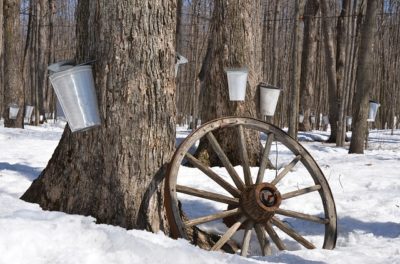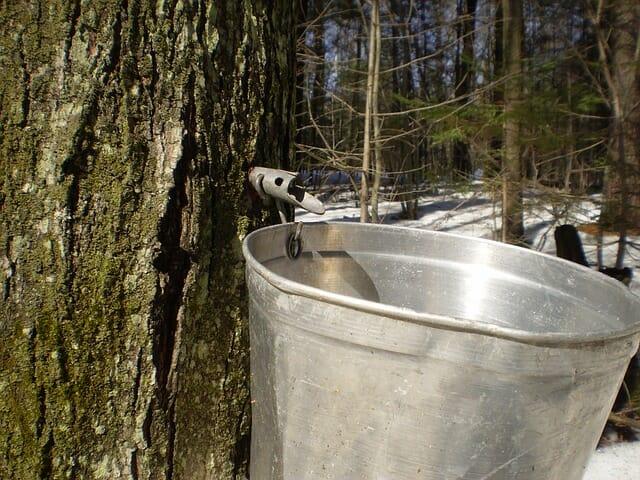|
Listen To The Article
|
Tapping trees to make syrup is an annual late-winter-into-spring tradition for many homesteaders. One of the keys to a successful syruping season is timing, and as is true with many homesteading activities, timing is all about the weather.
Nowadays, we have weather satellite information readily available at the touch of a screen, and can easily find charts of predicted weather to determine the best time to set our taps.
But satellite weather reports have not always been available. Old-timers used alternative sources to determine when was the best time for tapping trees for sap.
Here are seven ways they did that:
1. Day length.
For the first weeks after the solstice in December, the day length grows so slowly that it’s barely discernable. As the equinox approaches, daylight begins to increase dramatically. Rapidly lengthening days told early homesteaders that tapping season was around the corner.
2. Sun height in the sky.
During winter in the north, the sun slides east to west across the southern horizon. As warmer months approach, the sun’s daily traverse reaches higher into the sky.
Sunrise gradually occurs more toward the east than in the southeast, sunsets are more to the west than the southwest, and the sun is higher in the sky during the day.
3. Warm days and cold nights.
Old-timers could follow the temperature trends with or without a thermometer. It goes without saying that they could tell how warm or cold it was by going outside and feeling the air on their skin, but they could probably also get a sense of the temperature just by looking out the window. They could get a feel for the weather by the way the wood stove and chimney smoke behaved, the way livestock’s breath fogged up (or didn’t fog up), frost on roofs of outbuildings and neighbor houses, and the amount of ice clinging to the branches of trees.
4. Snow texture.
When the temperature rises and falls, the snow gets grainy. Some folks may have called it “corn snow” in their day. People who spend a lot of time on snow can easily discern a lot about atmospheric conditions by the feel and sound of the snow, and I suspect our ancestors were better at it than we were. The warmth of the sun on long sunny days turns the snowpack to mealy mush, which then becomes granular when the nighttime temperatures plummet.
5. Dripping branches.
Branches that have broken off due to wind or ice, or lopped off by a snowplow blade, will begin to drip when the sap is starting to run. This can be so dramatic that it’s visible driving past in a car, but syrupers in years past probably saw more close-up evidence as they went about their regular chores on the homestead.
6. Sap-drenched tree trunks.

tapping trees
Any break in the bark of a standing tree will allow sap to run out, sometimes so abundantly that it looks like someone left a faucet turned on up high on the tree. I’ve often admired the glistening trunks of late-winter maples while on my snowshoe travels, and I expect the old-timers must have, too.
7. Sappy sawblades.
Cutting into a live tree while the sap is running will result in a wet sawblade, whether it’s a modern chainsaw or an old-fashioned two-man crosscut.
These are likely to be some of the ways that our forbears could tell it was time to think about setting taps in trees and preparing to make syrup, and might well be some of the sure signs of tapping season that many people still observe today.
For my own small-scale backyard syruping operation, I use a combination of convenient online predictions and old-fashioned observations. However, probably the method I use most is none of the above. When I see lines and buckets up and running in other people’s maple groves, I know the time has come to run home and dig out my tapping supplies! This might sound a little slapdash, but a day or two either way does not make that much difference. And since large-scale outfits often use vacuum equipment which allows them to begin harvesting sap earlier than those relying on gravity, leaving plenty of time for me to get my taps set after noticing commercial operations already up and running.
I always say that one of the best things about homesteading in the 21st century is that we have the luxury to having both old-time practices and cutting-edge technology available. When it comes to setting taps for backyard syrup operations, using wisdom from the old-timers is a great way to start.
What advice would you add? Share it in the section below:
